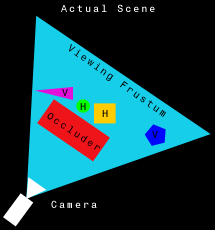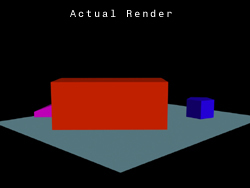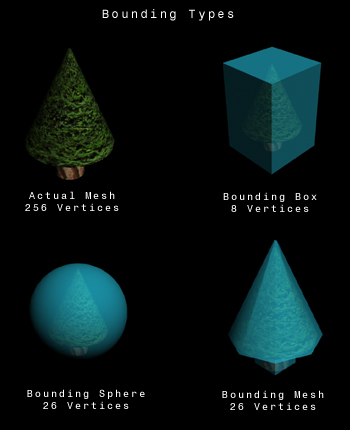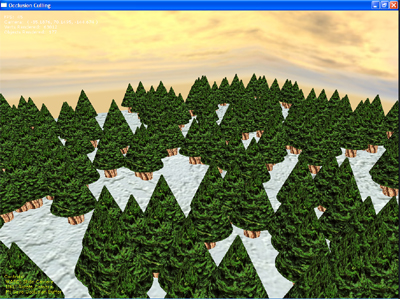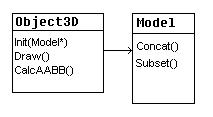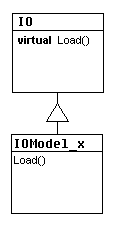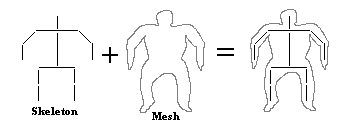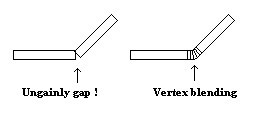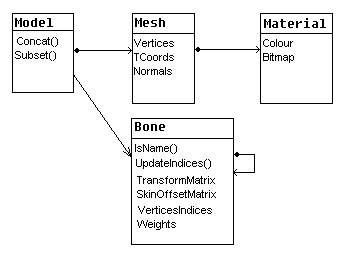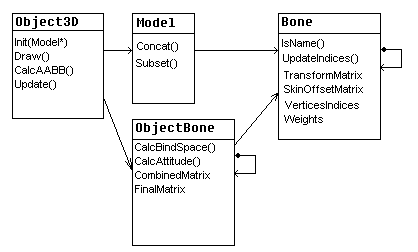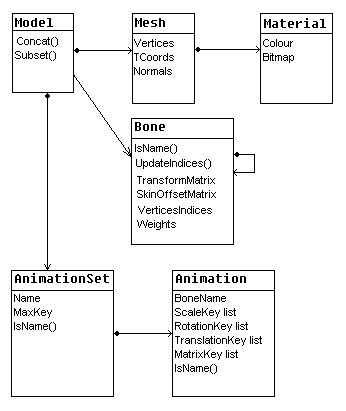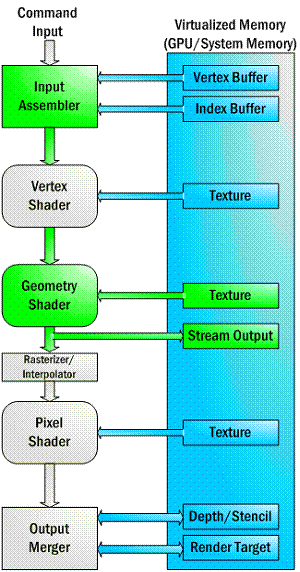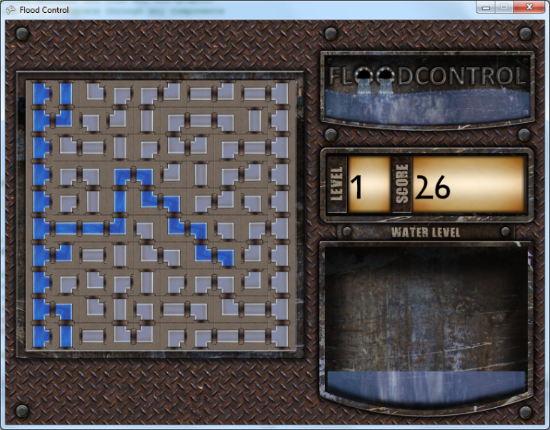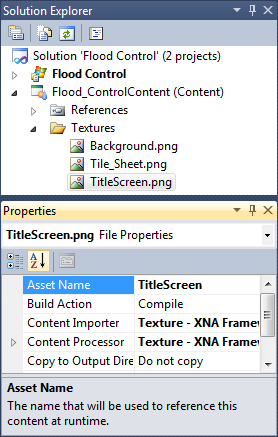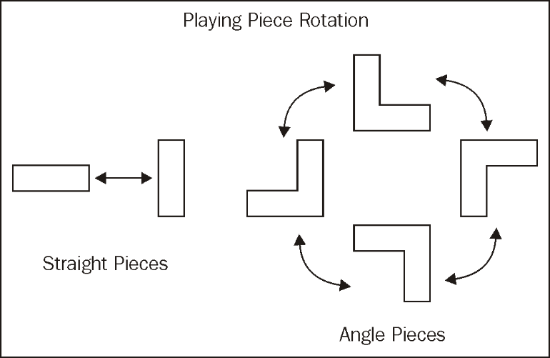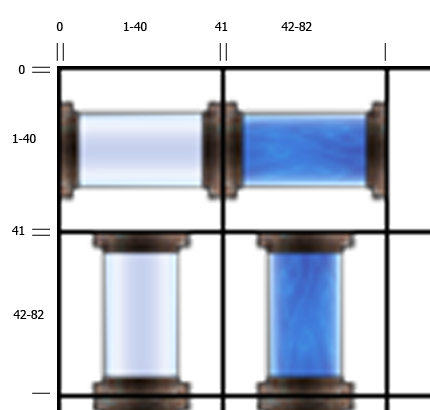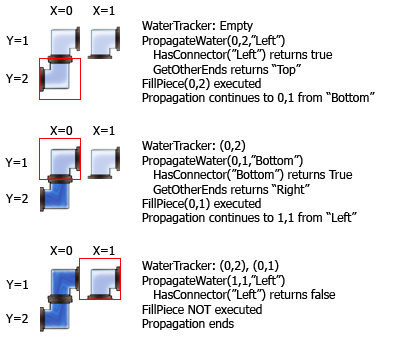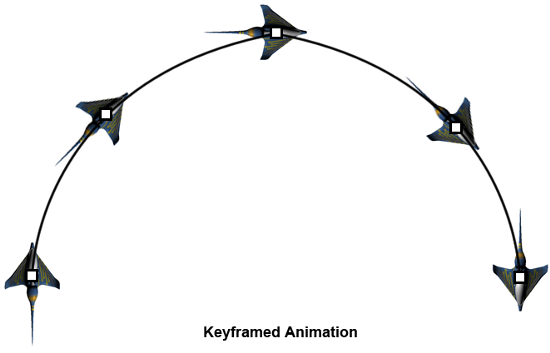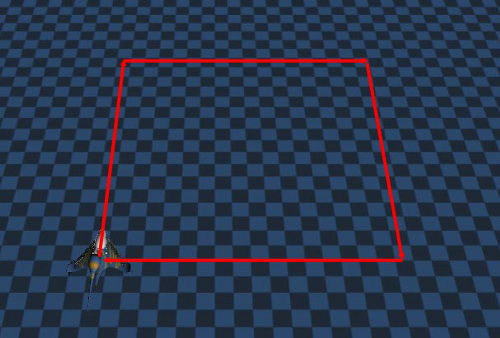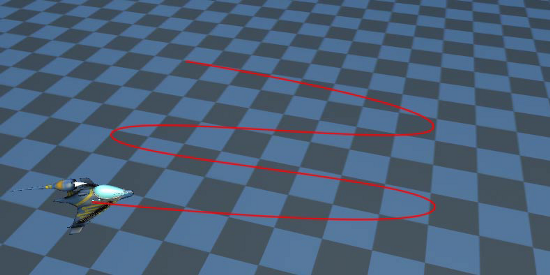Introduction
In an era of increasingly realistic game graphics, buzzwords like bump-mapping and per-pixel lighting take all the glory. The programmable hardware in today's consumer graphics cards does make these highly-realistic techniques available in real-time, but this same hardware makes stylized rendering available as well. Non-photorealistic rendering (NPR) is a branch of 3D graphics that has yet to be fully tapped for game use. With the advent of programmable shaders, a whole range of NPR styles are available that previously existed only in the pre-rendered domain.
This article focuses on using programmable hardware for a popular NPR technique: creating cartoon-like graphics from 3D models. Games are released every year that are based on cartoons but fail to convey the same look and feel as their subject matter. This work attempts to make cartoon-style graphics available to 3D game developers. It culminates in a powerful, fast cartoon renderer that will run on any Direct-X 8.0 compatible hardware.
We'll start by taking a quick look at our selected hardware, continue with a brief definition of cartoon rendering, describe the implementation details of our renderer, and finish with some benchmarks and ideas for the future. As you will see, our renderer is accessible: It runs on ATI and nVidia hardware and even the X-Box console. It is flexible: we can change the thickness, color, and style of our ink lines. We can modify shading styles by altering a single texture. It is fast: it runs at game-acceptable frame rates for scenes in excess of 40,000 polygons. Best of all, the frames generated by our renderer look great!
Limitations of our Hardware
Since the goal of this article is to create a DirectX 8.0 compatible cartoon renderer, there are certain things regarding our selected hardware that we should be aware of:
Vertex Shaders: We are limited to Vertex Shader language version 1.1 (VS 1.1) which means the 2.0 control instructions (if, call, etc.) will not be available to us. We are also limited in the number of registers and total instructions we can use, although all of the vertex programs in this article stay well under these limits.
Pixel Shaders: The first incarnation of the pixel shader language, PS 1.1, is a far-cry from what is available on more modern pixel shader hardware. The useful instructions that were added in language versions 1.2, 1.3, 1.4 and 2.0 will not be available. We are also limited to eight instructions per pixel program (sixteen if we are good at co-issuing instructions to the RGB and alpha pipelines).
Texture stages: We have only four texture stages, which is somewhat unfortunate, as the outlining technique we use would be more accurate with five. On the other hand, the 5th stage wouldn't be all that useful without a higher pixel shader instruction limit, so the absence of the additional stage is somewhat moot.
Rendering passes: Ideally, the entire scene would be rendered in one pass, but without the multiple render target support that exists on more modern hardware, our renderer is limited to a two-pass approach.
What Is Cartoon Rendering?
Cartoon rendering (sometimes referred to as cel-shading) has two major constituents: painting and inking. In the traditional sense, painting is filling a cartoon object with areas of color. A simple cartoon will use solid colors for different objects (flat-shading), but more complex cartoons use two or even three colors for each material. This is often called stepped-shading because the color "steps" dramatically from the shadow color to the highlight color. The stepped-shading effect looks quite different from realistic rendering techniques as there isn't a smooth gradient between the shadowed and highlighted areas of an object.
Inking mimics a traditional cartoonist's use of black ink to create a stylized world. In a cel-shaded scene, each object needs an "ink" line to separate it from other objects. It also needs lines to emphasize its features, to show sharp edges, and to separate any areas of differing color. In the examination of our renderer, we will look at the algorithms and implementations for painting and inking separately, as it represents a logical division of concepts.
The Evolution of a Cartoon Renderer
The cartoon renderer discussed in this article has been through many incarnations. A great deal of research and experimentation went into developing the current implementation of both the painting and inking components of the renderer. While the details of the different methods I have tested are beyond the scope of this article, more information about these methods accompanies the sample program and source code available from here. With that brief caveat, let's get our hands dirty with the renderer itself.
Painting
The first part of our cartoon renderer is the painter. As a minimum, a painter needs to support rendering an object with solid colors. A more advanced painter will generate stepped shadows and highlights using light direction, vary this shading with brightness, and even support multiple light sources.
Displaying objects with solid colors is rather trivial, but some research has been done into different stepped shading techniques. According to Claes [1], it is possible to choose a constant color (either highlight or shadow) for each polygon, but better results occur if some polygons are subdivided into two shades using linear interpolation. In order to use programmable hardware to achieve a similar effect, it is necessary to use the light direction vector and vertex normal to to sample a specialized shading texture. This is similar to the algorithm used by Lake [2].
The simplest hardware implementation of a painting algorithm that supports stepped shading uses a one-dimensional texture. A vertex program takes the direction of a single light and calculates the dot-product between the light and the vertex normal. A value of one means that the two vectors point in exactly the same direction, but as the angle between the two vectors increases, the value decreases. We can clamp the negative values to zero and use this result as a texture coordinate. A coordinate of 1.0 represents normals that are facing the light and should be bright, and a coordinate of 0.0 will represent normals that are facing away from the light and should be dark.
Our painter improves on this basic algorithm in three ways. Firstly, we calculate the dot-product per-pixel instead of per-vertex. This smoothes jagged shadow lines that can appear on low-poly models. Secondly, we support two directional lights for each mesh. Thirdly, we scale the texture coordinates with the brightness of the light, allowing brighter lights to expand the highlighted areas or even use an extra highlight shade.
The relevant part of the vertex program for our painter is shown in listing 1. It puts the transformed vertex normal into the first set of texture coordinates and the angle of the two lights in the second and third sets of texture coordinates. The light vectors are scaled by the brightness of the light before they are passed to the vertex program. This has the effect of scaling the eventual dot-product between the light and normal vectors.
Listing 1
vs.1.1 ; painter vertex shader dcl_normal v3 ; transform normal dp3 r1.x, v3, c[INVERSE_WORLD_MATRIX] dp3 r1.y, v3, c[INVERSE_WORLD_MATRIX_1] dp3 r1.z, v3, c[INVERSE_WORLD_MATRIX_2] ; renormalize it dp3 r1.w, r1, r1 rsq r1.w, r1.w mul r1, r1, r1.w ; stick normal vector in first stage mov oT0, r1 ; stick first light position in second stage mov oT1, c[LIGHT_POSITION_A] ; stick second light position in third stage mov oT2, c[LIGHT_POSITION_B] Most of the work is done in the pixel program that is shown in listing 2. The first stage contains a normalizing cube-map. This is a specialized cube-map that converts interpolated normal values into renormalized values biased into the 0.0 to 1.0 range. This is more accurate than using the texcoord instruction to grab the coordinates directly, as linearly interpolated values can result in vectors with lengths less than one. Figure 1 shows how this occurs. The _bx2 instruction modifier is used to return the vectors into the proper range when they are needed for calculations.

Figure 1: Because the vertex normal is passed to the pixel shader in texture coordinates, it is linearly interpolated per pixel. This interpolated value follows the blue line, leading to non-normalized values on smoothed polygons. The proper normal should follow the red line.
Listing 2
ps.1.1 ; painter pixel shader def c0, 0.0f, 0.0f, 0.0f, 0.75f ; light scale def c1, 0.0f, 0.0f, 0.0f, 1.0f ; black tex t0 ; grab the normalized normal ; normalizing cube map is in t0 texm3x2pad t1, t0_bx2 ; dot with light a for u value texm3x2tex t2, t0_bx2 ; dot with light b for v value ; 2d shade texture is in stage t2 tex t3 ; regular texture data mov r0, C_MATERIAL_DIFFUSE ; load constant color in cnd r0, r0.a, r0, t3 ; if alpha, use color ; else, use texture mul r1.rgb, r0, t2 ; modulate with shading mul r0.rgb, C_LIGHT_COLOR, c0.a ; scale down light value mul_x2 r0.rgb, r0, r1 ; modulate x2 with light color The texm3x2pad and texm3x2tex instructions are used to perform the dot-products between the light angles and the normal. The resulting two scalars are used as u and v coordinates to sample the shading texture which is placed in the third stage. As seen in figure 2, the shading texture has dark pixels at (u=0, v=0) and lightens in steps as the values increase to (u=1, v=1). The number of steps and their relative size is determined by the texture, so it is easy to create a completely different shading style by swapping in a new one.

Figure 2: The shading texture used by our painter. Shadow shades appear in the upper left corner and lighten toward the right and bottom of the texture.
Remember that the light angle is scaled by the brightness of the light, so a half-bright light will generate texture coordinates lower than 0.5. It is therefore possible to create a highlight shade that only shows up around bright lights. This scaling also makes it possible for one of the two lights that are illuminating the model to appear brighter than the other.
Our shading is modulated with either a constant color from the material or the sample from the fourth texture stage, which can contain a standard texture. We then modulate this color with a light color that is passed to the pixel program via a constant. We use a combined light color because applying one color to some pixels and a second color to other pixels creates a gradient that spoils the stepped shading. We also overbrighten the model color based on the light color. Modulating by 2 is too extreme, so we scale the light color by 0.75 before doubling it. This results in 1.5x modulation and gives very nice results.
Inking
The second portion of our cartoon renderer is the Inker. There are three different categories of lines that we want our inker to take care of. The first type is an outline that surrounds each model, distinguishing it from surrounding objects. The second type of line is drawn on sharp edges or creases in the model to accentuate its features. The third type of line is the characteristic line created by an artist. These lines could be used on a flat model, for example, or to emphasize a character's facial features that aren't distinct enough in geometry to generate an edge-line.
A great deal of investigation has been done into world-space line-generation techniques. Buchanan [3] recommended using an edge buffer to keep track of edge polygons. Raskar [4] developed methods of extending back-facing polygons to create outlines and edges. The researchers at nVidia [5] show how to use a vertex program to generate outlines on a model. Mitchell [6], was the first to suggest using modern hardware to create outlines by comparing pixels in image-space.
Despite the prevalence of world space techniques, edge-lines and and artist-lines almost always require the generation of new geometry and/or the maintenance of software information that doesn't translate well to programmable hardware. The vertex-shader outlining technique is reasonably effective for high-poly, smooth models, but its quality is simply unacceptable for low-poly and angular models. Programmable pixel shaders make image-space edge detection techniques possible at real-time frame rates. We are therefore going to use image-space techniques for our inker.
So, how do we use pixel programs for image filtering? It is first necessary to put the source image in all four texture stages. Then we create a vertex program that offsets the texture coordinates slightly. For example, we move the coordinates for the first stage up and to the left the equivalent of one pixel. We move the third stage down and to the right and similarly offset the second and forth stage down-left and up-right, respectively. Listing 3 shows the code for a simple vertex program that does this. The four texture stages allow a pixel program to sample four input pixels for each output pixel. It is possible to do sharpening, blurring, and even luminance edge detection in short pixel shader programs.
Listing 3
vs.1.1 ; texture coordinate offset vertex shader dcl_texcoord0 v1 mov a0.x, c[OFFSET_SET].x ; grab the proper offset ; c[OFFSET_SET].x is the number of the constant register ; that contains the first of four x and y offsets. add oT0, v1, c[a0.x + 0] add oT1, v1, c[a0.x + 1] add oT2, v1, c[a0.x + 2] add oT3, v1, c[a0.x + 3] The only disadvantage of the image-filter approach is that it is now necessary to render every object in the scene twice: once, into the back buffer to create the cartoon shading and, again, into a texture that can be placed in the four texture stages of the image-filter pixel program. More modern hardware can use multiple render targets to do this in one pass, but our selected hardware doesn't allow it. For now, we have to live with a 50% frame rate hit that will translate into lower poly in-game models than could otherwise be used.
Our inker generates a set of lines in a texture that is the same size as the back-buffer. This texture will be applied to a single quad and rendered over the top of our shaded scene. This doesn't really constitute a third rendering pass, because only two triangles are sent to the hardware. It can have an impact on frame rate, though, as it pushes the hardware's fill-rate, especially in high-resolution modes. Remember that our pixel program will have to run once for each pixel on the screen, so higher resolution means lower frame rate. Fortunately, the impact is fairly constant for each resolution, regardless of how many polygons are in the underlying scene.
To use an image-filter for ink line generation, we need to render a version of the scene that has information encoded into color values. The RGBA components represent the only data available to our pixel program, so we need to use them wisely. We will use the alpha component to store depth information that our image-filter will turn into outlines. The RGB values will be used for both the edge-lines and the artist-lines. Edge-lines need to be generated when neighboring pixels have vertex normals that face in drastically different directions, so we need to encode these normals as RGB colors. To do this we can use the same normalizing cube-map that we used for the Painter.
Our shader supports artist-lines via two different methods. It can use info stored in vertex colors or info stored in a texture. Unfortunately, we can only generate one set of RGB values for each pixel in the scene. Therefore each set of polygons can use either edge-lines, vertex color artist-lines, or texture artist-lines, but only one of the three. It is easiest to specify the type of line per-material, so each section of an object can use a different method.
Our pixel program will calculate the dot-product between neighboring pixels to determine if an edge-line is required. It is to our advantage to encode artist-lines as normalized vectors in order to use the same dot-product method. We don't want our artist-generated colors to interfere with the normal-generated colors, so we're going to use the set of RGB encoded normals that is facing away from the camera. Essentially, we're going to use four colors that represent normals that are not in view from the current camera location. The two artist-line algorithms do this in slightly different ways.
The first method for artist-lines uses vertex-color information. We pick four colors that represent normals that are equidistant from the x-y plane and from each other and paint polygons in the model with these colors. An example of four possible vectors and colors is shown in figure 3. These four colors should be enough to generate lines on even complex models if they are used wisely. Lines will appear in between polygons that we have painted with different colors. In the renderer, a vertex program converts the colors back into normals and rotates them so they point in the same direction as the eye-to-vertex vector. This generates normals that are always pointing away from the eye and therefore colors that won't interfere with our edge-line colors.

Figure 3: The figure shows four unit vectors that are separated from each other and a plane by approximately 45 degrees. The encoded RGB values for these vectors are included below the XYZ coordinates.
The second method uses four colors as well, but in this case we generate a dynamic 2x2 to contain them. The four normals are rotated to face the same direction as the eye-to-object vector, encoded, and placed in the texture in every frame. Because we rotate the vectors per-object, the results won't be quite as accurate as the per-vertex method. When we are close to large objects, some lines may disappear as the artist-line colors enter the same range as the edge-line colors. We sample the dynamic 2x2 texture using the pixel shader texreg2ar instruction. This instruction interprets the red and alpha values of a supplied texture as texture coordinates to sample a second texture. This essentially replaces four input colors from an artist-supplied texture with our four dynamic colors.
Our render texture now has the data needed to generate ink lines. Listing 4 shows the image-filter pixel program that does this. It compares opposite pixels, looking for differing colors and depth values. Ultimately, it depends on the one conditional instruction available in PS 1.1: cnd. This instruction will choose between two source colors and based on a single scalar. There are constant-supplied depth and edge thresholds that will specify the difference needed for RGB and alpha values to generate ink lines.
Listing 4
ps.1.1 ; inker pixel shader def c0, 0.0f, 0.0f, 0.0f, 0.9f ; threshold for normals def c1, 0.0f, 0.0f, 0.0f, 0.25f ; depth threshold def c2, 1.0f, 1.0f, 1.0f, 0.0f ; white and transparent def c3, 0.0f, 0.0f, 0.0f, -0.25f ; depth adjustment tex t0 tex t1 tex t2 tex t3 dp3 r0.rgb, t0_bx2, t2_bx2 ; dot the normals for opposite pixels +sub r0.a, t0.a, t2.a ; find depth differences dp3 r1.rgb, t1_bx2, t3_bx2 ; repeat for other set +sub r1.a, t1.a, t3.a mad t0.a, t0.a, c3.a, c0.a ; scale the normal threshold with depth ; uses first texture stage pixel sub_x4_sat r0.rgb, r0, t0.a ; subtract the normal threshold and clamp +mad r0.a, r0.a, r0.a, c1.a ; square the differences + add threshold sub_x4_sat r1.rgb, r1, t0.a ; repeat for other set +mad r1.a, r1.a, r1.a, c1.a mul_x4_sat r0.rgb, r0, r1 ; combine the clamped normal values +add r0.a, r0.a, r1.a ; combine the differences add r0.a, 1 - r0.b, r0.a ; combine depth and normal values cnd r0, r0.a, C_LINE_COLOR, c2 ; set pixel line color We also scale the edge threshold with the depth value of one of the pixels. This solves an annoying problem of smooth sections of the model turning into lines in the distance. You may need to modify the edge threshold and depth adjustment values. Optimal values depend on resolution, far plane distance, and the general look of different models in your game.
It is common for games to use partially-transparent textures for objects like fences and leaves, where modeling features in geometry would increase the polygon count drastically. This will work with our inker as long as we include alpha values when we render the object into the overlay texture. The best method for this is to use 1-bit alpha and turn on alpha-testing. Zero alpha pixels will be discarded and lines will be drawn around areas that remain visible.
Our inker also supports different line widths by changing the size of the render texture. A texture that is twice the size of the back buffer creates nice thin lines, assuming the hardware can support render surfaces that large. Smaller textures can create thicker lines, but these lines tend to look more pixilated as they thicken.
A better approach for thickening lines is to render the overlay lines into a second render texture instead of the back-buffer. This second texture is overlaid again with a "dilating" pixel program. This method is quite fast for low-resolution output, but can be limited by fill-rate in high-resolution modes. Listing 5 contains two pixel programs that use slightly different algorithms to "dilate" the original ink lines. The first pixel program thickens the lines by outputting an ink line pixel if any of the four sampled pixels are ink line pixels. The second pixel program creates smoothed lines by linearly interpolating between the line-color and transparent depending on how many ink line pixels are sampled.
Listing 5
ps.1.1 ; dilation pixel shader def c0, 0.0f, 0.0f, 0.0f, 0.25f ; for 1/4 multiplication def c1, 0.0f, 0.0f, 0.0f, -0.75f ; for subtracting def c2, 1.0f, 1.0f, 1.0f, 0.0f ; white and transparent tex t0 tex t1 tex t2 tex t3 mul r0.a, 1 - t0.a, c0.a ; sum 1/4 of inverse samples mad r0.a, 1 - t1.a, c0.a, r0.a ; alpha of lines are 1.0 alpha mad r0.a, 1 - t2.a, c0.a, r0.a mad r0.a, 1 - t3.a, c0.a, r0.a add_x4 r0.a, r0.a, c1.a ; subtract .75 and mul * 4 ; only transparent pixels will ; remain transparent cnd r0, r0.a, c2, C_LINE_COLOR ; conditionally choose between ; transparent and line color ps.1.1 ; smooth dilation pixel shader def c0, 0.0f, 0.0f, 0.0f, 0.5f ; smoothing threshold ; 0.25 = max smoothing ; 1.0 = no smoothing def c2, 1.0f, 1.0f, 1.0f, 0.0f ; white and transparent tex t0 tex t1 tex t2 tex t3 mul r0.a, t0.a, c0.a ; combine the four samples using mad r0.a, t1.a, c0.a, r0.a ; threshold and clamp mad r0.a, t2.a, c0.a, r0.a mad_sat r0.a, t3.a, c0.a, r0.a mov r1.rgb, C_LINE_COLOR ; create a zero alpha version + mov r1.a, c2 ; of line color lrp r0, r0.a, C_LINE_COLOR, r1 ; interpolate line color
Speed and Quality
Figure 4 shows a frame-rate comparison using a 64 megabyte Radeon 9000 mobile card. As you can see, the speed of the painter is highly-dependant on the number of triangles in the scene. In the worst case, its speed is 67% of the speed of rendering the same polygons normally. The initial rendering of the inker is similar in speed to painter, but there is a consistent speed loss for each quad that is overlaid on the screen. This loss is about 4 ms per frame at 800x600 and about 17 ms per frame at 1280x1024. The results from this card are completely acceptable at 800x600 with the shading, outlining, and dilation turned on, and the results are passable at 1280x1024.
800 x 600
40,000 poly model 26,000 poly model 1200 poly model Untextured Polygons 187 fps 232 640 Painter 137 173 555 Inker 91 104 150 Inker + Dilation 67 72 94 Painter + Inker 56 68 140 Painter + Inker + Dilation 46 53 89 1280 x 1024
40,000 poly model 26,000 poly model 1200 poly model Untextured Polygons 128 fps 134 250 Painter 87 91 220 Inker 35 36 43 Inker + Dilation 22 22 25 Painter + Inker 27 28 41 Painter + Inker + Dilation 19 19 24 Figure 4: The above results were obtained using a 64 megabyte Radeon 9000 Mobile graphics card in a laptop with a 3.06 GHz processor and 512 Megabytes of RAM
Figure 5 shows a couple of screenshots from the cartoon renderer we have developed. As you can see, the results are quite satisfactory. There are only two potential problems with the quality of our renderer. First, lines will occasionally disappear or reappear as we move around a model. This is due to new pixels coming into view and therefore new edges appearing that were not visible in the previous frame. Second, the shadow-boundaries generated by our painter can appear a bit fuzzy. It is a matter of preference as to whether these soft edges improve or worsen the look of the renderer.



 Figure 5: Screenshots from the demo program illustrating the high-quality achieved by the Cartoon Renderer. As a whole, the results are far better than the results I have seen from other methods. In my opinion, the renderer is powerful enough to be used in a commercial game in its current incarnation, and any improvements that are made to it would simply be icing on the cake.
Figure 5: Screenshots from the demo program illustrating the high-quality achieved by the Cartoon Renderer. As a whole, the results are far better than the results I have seen from other methods. In my opinion, the renderer is powerful enough to be used in a commercial game in its current incarnation, and any improvements that are made to it would simply be icing on the cake.Future Refinements
While quite powerful in its own right, there is no doubt that further additions could be made to the cartoon renderer we have developed in this article. One possible modification would be to change our painter to use point lights instead of directional lights. To accomplish this it would be necessary to implement light-falloff and brightness calculations inside the vertex program. The light direction vector would need to be scaled inside the vertex program as well.
Another fascinating addition would be to create varied line-styles for the inker. This could be accomplished by rendering the lines onto something other than a simple quad. For example, one could use a 16x16 mesh of quads that could be perturbed according to some semi-random calculations in a vertex program. This could give a sketchy look to the lines, as they would move slightly each frame. Other interesting line-styles are made possible by replacing the "dilation" pixel program. We have only used this second pixel program to thicken the line, but one could also change look of the ink lines by offsetting individual pixels or changing their colors.
Conclusion
Our cartoon renderer gives us freedom in the look of our painting, even allowing us to use different highlighting depending on light brightness. It also has the flexibility to completely change highlighting schemes by switching out a single texture. It supports two, colored, per-pixel lights that can have varying brightness. Our outlining algorithm supports depth-based lines, automatic edge and crease lines, as well as artist-specified lines. All of these lines are rendered with a consistent style and can be drawn in varying widths and even smoothed.
This all adds up to possibly the most robust cartoon renderer developed to date, and it runs on all Direct-X 8.0 compatible hardware. It will even work on an X-Box! I would love to see the techniques described in this article implemented in a commercial game. We need to break the monotony of run-of-the-mill "realistic" graphics that are so prevalent in today's entertainment software. If anyone has questions regarding the cartoon renderer or any improvements that they wish to share, please contact me at vishvananda@yahoo.com.
For Further Information
Most of the papers referenced below can be found at the Citeseer website at http://citeseer.nj.nec.com. You can also find more information included with the demo program here.
[1] J. Claes, F. Di Fiore, G. Vansichem, F. Van Reeth. Fast 3D Cartoon Rendering with Improved Quality by Exploiting Graphics Hardware. 2001
[2] A. Lake, C. Marshall, M. Harris, M. Blackstein. Stylized Rendering Techniques for Scalable Real-Time 3D Animation. 2000.
[3] J. Buchanan, M. Sousa. The edge buffer: A data structure for easy silhouette rendering. 2000
[4] R. Raskar. Hardware Support for Non-Photorealistic Rendering. 2001.
[5] NVIDIA's Vertex Toon Shader http://developer.nvi...on_Shading.html
[6] J. Mitchell, C. Brennan, D. Card. Real-Time Image-Space Outlining for Non-Photorealistic Rendering. 2002. http://mirror.ati.co...ng_Mitchell.pdf
